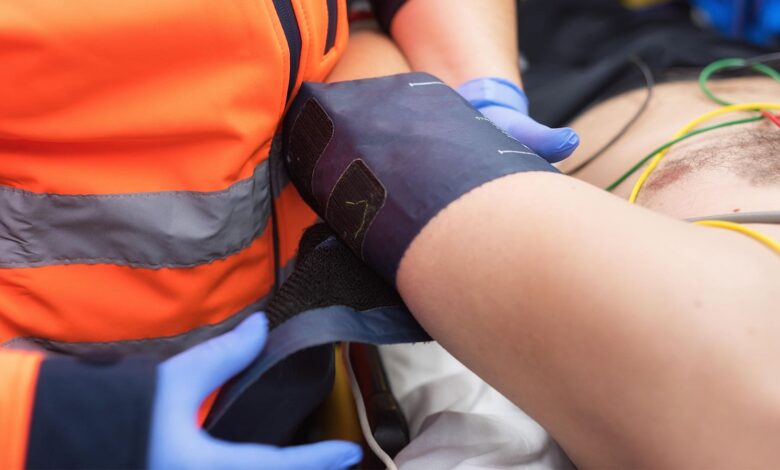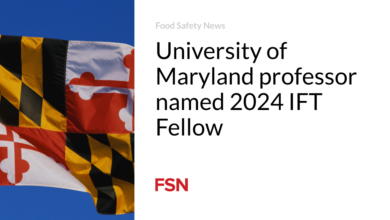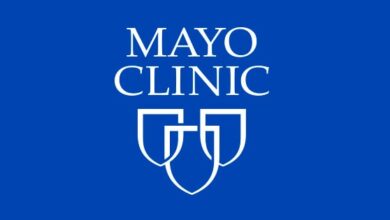Prehospital Hypertension Control No Help in Unselected Acute Stroke

—
Chinese trial suggests benefit for one stroke subtype but may need replication
by
Crystal Phend
,
Contributing Editor, MedPage Today
May 16, 2024
Bringing blood pressure under control in the ambulance didn’t improve stroke outcomes in an unselected population, the China-based INTERACT 4 trial showed.
Functional outcome measured by the modified Rankin Scale was no better with that early systolic blood pressure reduction to 130-140 mm Hg compared with usual care en route to the hospital (common OR 1.00, 95% CI 0.87-1.15), reported Gang Li, MD, PhD, of Shanghai East Hospital at Tongji University in Shanghai, and colleagues.
The prehospital intervention appeared safe overall, with serious adverse events occurring in 27.5% and 28.7% of patients, respectively, they noted in the New England Journal of Medicine. The findings were also presented at the European Stroke Organisation meeting in Basel, Switzerland.
Of note, for the roughly half of patients who were diagnosed at the hospital with ischemic stroke, prehospital blood pressure control significantly increased the odds of a poor functional outcome (common OR 1.30, 95% CI 1.06-1.60).
However, for those with hemorrhagic stroke, the opposite was true, with a significant 25% relative reduction in risk of poor functional outcome.
“These results are perhaps predictable,” wrote Jonathan A. Edlow, MD, of Beth Israel Deaconess Medical Center and Harvard Medical School in Boston, in an accompanying editorial.
A similar overall neutral finding with possible harm was seen in the RIGHT-2 trial of nitroglycerin patches administered in the hospital to rapidly reduce blood pressure for suspected acute stroke patients.
Blood pressure targets diverge for intracerebral hemorrhage versus acute ischemic stroke and whether thrombolysis or mechanical thrombectomy is planned.
“Antihypertensive therapy in patients with intracerebral hemorrhage is meant to limit hematoma growth,” Edlow noted, whereas less restrictive targets are used in acute ischemic stroke “with the presumption that autoregulated blood pressure improves blood flow to, and results in increased salvage of, ischemic penumbral tissue.”
A number of issues in INTERACT 4, though, indicate that the results should be viewed as hypothesis generating rather than conclusive, he argued, calling for validation of the trial results in other settings.
“First, nearly all the patients were treated with urapidil, an α1 receptor blocker that is unavailable in the United States,” and were of Han Chinese ethnicity, Edlow pointed out.
More importantly, he added, “the roughly even split between patients with intracerebral hemorrhage and those with acute ischemic stroke is unusual, even in a Chinese population. Aggressive reduction of blood pressure in a typical North American or European community-based stroke population, in which the ratio of patients with intracerebral hemorrhage to those with acute ischemic stroke is approximately 20:80, could result in net harm if the subgroup analysis estimates are valid.”
And, oddly, “more than two thirds of patients with acute ischemic stroke in this trial had visible signs of ischemia or infarction on the initial CT scans, which were obtained within 3 hours after stroke onset; however, most CT scans obtained within this time frame are normal in patients with acute ischemic stroke,” Edlow pointed out. “Potential explanations for the high sensitivity of CT in the current trial include the presence of unusually large strokes in the trial cohort, erroneously determined stroke onset times, or improvements in CT technology, all of which are unlikely.”
The trial included 2,404 patients (mean age 70) in China with motor deficits from a suspected acute stroke assessed in the ambulance within 2 hours after onset of symptoms or time last known well, who had a systolic blood pressure of at least 150 mm Hg.
They were randomized 1:1 to immediate treatment in the ambulance with antihypertensive medication to bring their systolic blood pressure to 130-140 mm Hg or to a usual management approach with antihypertensives given only if their systolic pressure reached 220 mm Hg or higher or if their diastolic pressure reached at least 110 mm Hg. Nearly all of the intervention group patients (98.5%) received antihypertensive medication as randomized in the ambulance compared with 9.7% of the usual care group.
Median time from symptom onset to randomization was 61 minutes. Systolic blood pressure declined from a median of 178 mm Hg at randomization to 158 mm Hg in the intervention group, compared with 170 mm Hg in the usual care group at hospital arrival.
Stroke was subsequently confirmed by imaging in 2,240 patients, of whom 46.5% had a hemorrhagic stroke.
The researchers cautioned that the subgroup analysis for the primary outcome measure of modified Rankin Scale by stroke type was not part of a hierarchical statistical plan, thus “causal inferences about these associations cannot be drawn.”
Other study limitations included that emergency services involved in the trial involved trained doctors, which might limit generalizability to paramedic-run ambulance services like those more common in the U.S.; potentially limited relevance to patients presenting with possible stroke that has caused a minor neurologic deficit; and the open-label design.
Disclosures
The trial was supported by the National Health and Medical Research Council of Australia, the George Institute for Global Health, Shanghai East Hospital of Tongji University, other institutional and governmental funds, and Takeda Pharmaceuticals China.
Li disclosed no relevant relationships with industry.
Edlow disclosed relationships with UpToDate.
Primary Source
New England Journal of Medicine
Source Reference: Li G, et al “Intensive ambulance-delivered blood-pressure reduction in hyperacute stroke” N Engl J Med 2024; DOI: 10.1056/NEJMoa2314741.
Secondary Source
New England Journal of Medicine
Source Reference: Edlow JA “Lowering blood pressure in stroke patients in the ambulance — A bridge too close?” N Engl J Med 2024; DOI: 10.1056/NEJMe2402356.
![author['full_name']](https://clf1.medpagetoday.com/media/images/author/crystalPhend_188.jpg)


